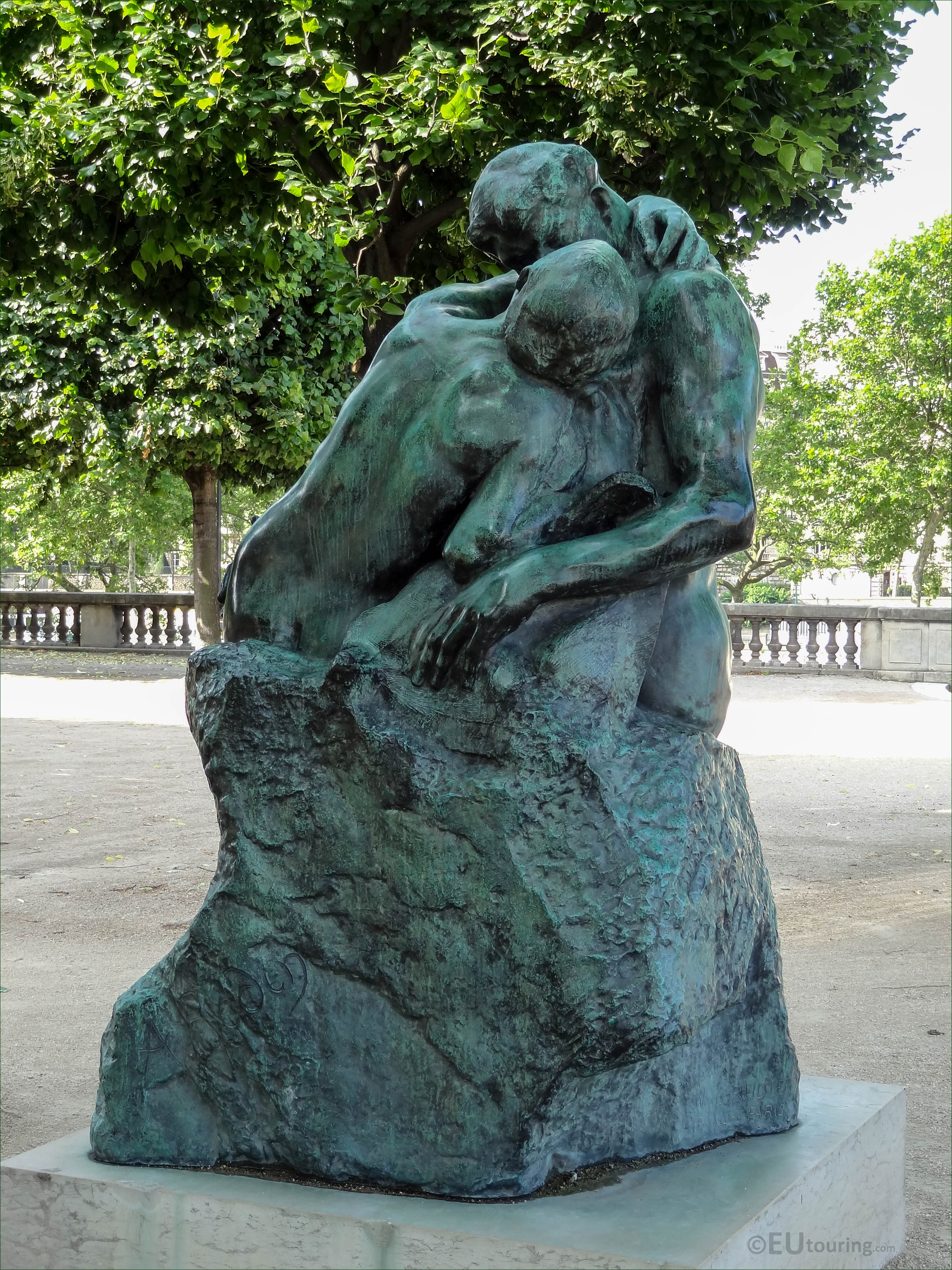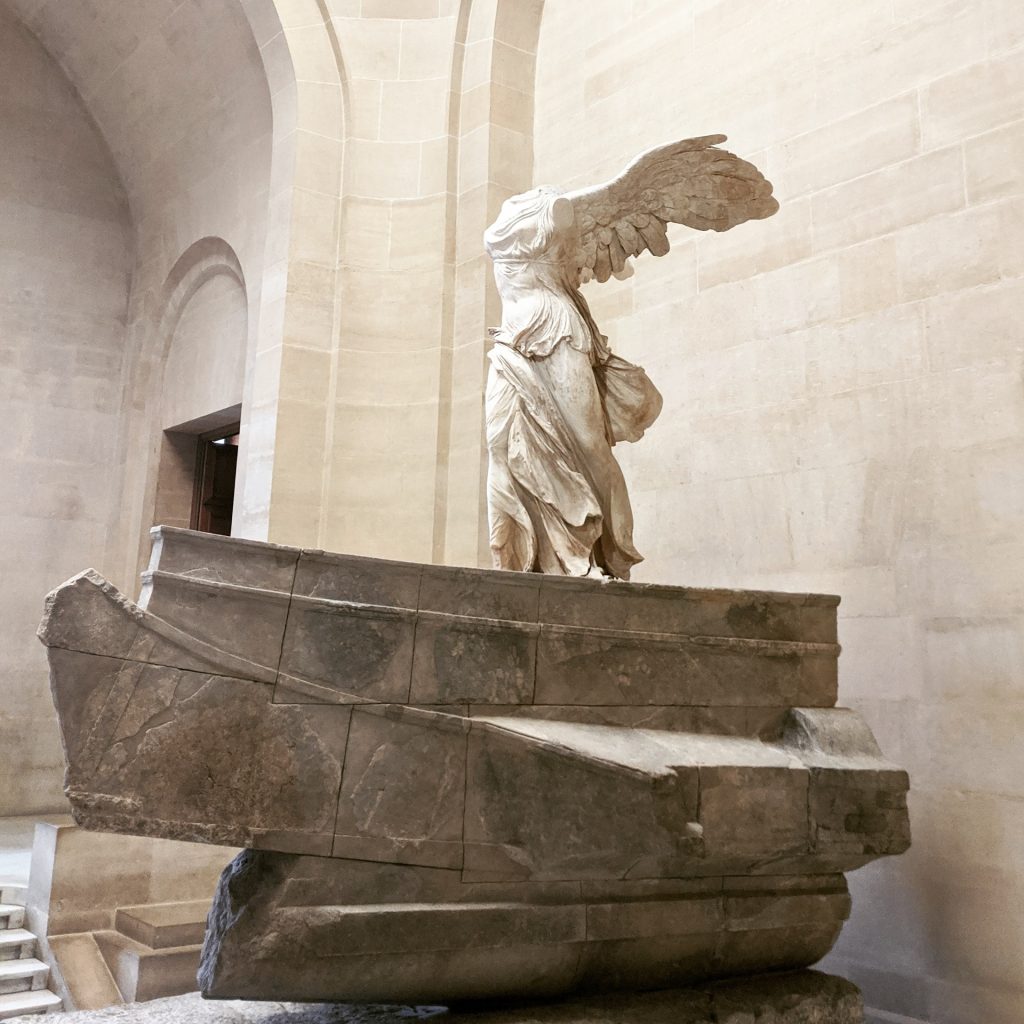
The Kiss statue in Tuileries Gardens Paris Page 958
Celebrated French sculptor Auguste Rodin has had a museum (External link) dedicated to him in Paris since 1919, housed in an 18th-century mansion surrounded by three hectares of peaceful and romantic gardens. 'The Kiss' is one of his most celebrated sculptures, its blend of eroticism and idealism making it one of the great images of sexual love. The depicted couple are the adulterous.

13 Surprising Facts About the Louvre (And What To See There) Blog
The collection of sculptures at the Louvre was initially only small with only 100 works when the museum was established in 1793. It gradually grew and. Psyche Revived by Cupid's Kiss is one of the most famous sculptures by renowned Neoclassical artist and leading sculptor of his time Antonio Canova (1757-18822). It was commissioned by a.

Pin on Art
3 February 2011 by Rosemary Flannery 4106. Silhouetted against the sky above the Louvre entrance across from the Palais Royal, angels rejoice in the glory of the arts and the power of the Second Empire: a neo-Renaissance extension of the Louvre expresses the artistic ambitions of Napoléon III. Napoléon III laid the first stone of what would.

Louvre Angel statues, Statue, Louvre paris
Psyche Revived by Cupid's Kiss (Louvre) Title: Psyche Revived by Cupid's Kiss. Artist: Antonio Canova. Year: 1787-1793. Place Created: Italy. Medium: Marble. Dimensions 155 cm × 168 cm (61 in × 66 in) Type: Mythological Art. Museum: Louvre Museum in Paris, France.

Pin by Glyba on sculpture Angel sculpture art, Sculpture art, Figurative sculpture
The story of Cupid and Psyche was a popular artistic choice in the neoclassical period. Canova produced many versions of the theme; most were of terracotta, but he also sculpted some beautiful marble groups, two of which are in the Louvre: Cupid and Psyche standing, and Psyche Revived by Cupid's Kiss.The figures of Cupid and Psyche are standing, Cupid completely naked, Psyche modestly draped.

Pray by UncleSarah on deviantART Angel sculpture, Angel statues, Angel drawing
Enter via the Denon Wing to proceed directly to Step 3. Turn left to cross the gallery of preclassical Greece (Rooms 170 and 172), then take the stairs to Level 1. Enter through the Sully wing. After the ticket check, go straight on. When you reach the entrance to the Pavillon de l'Horloge, take the stairs on the right up to Level 1.

Seated Angel Statue Angel sculpture, Angel statues, Angel art
Photo about Aug 25 2014 Woman with Angel Statue and Tourists enjoy at the Louvre museum,Paris. Image of exterior, modern, attraction - 49603755

My favorite...Beautiful ! Psyche Revived by Cupid's Kiss by Antonio Canova in Paris' Louvre
The Dream (The Angel's Kiss) - Rodin, Auguste. Museo Nacional Thyssen-Bornemisza. In parallel to the execution of public commissions during the 1880s, and in particular after the success of his major retrospective exhibition in 1900, Rodin produced new sculptural groups using a totally innovative technique in sculpture: that of combining.

Sculpture Angel Kissing Woman Louvre LOVELAND SCULPTURE WALL
Angel kissing a woman · Sculpture · Statue Musée du Louvre (Paris, France) Nikon D7000 228 views 0 faves 0 comments Uploaded on March 1, 2011 Taken on December 29, 2010 All rights reserved Sponsored images from 10 free downloads. Any monthly plan. Use code: FLICKR10 Upgrade to Flickr Pro to hide these ads Additional info Viewing privacy Public

Pin by Arnaud Rothfuss on sculpture Angel sculpture, Cemetery art, Angel art
Antonio Canova's statue, Psyché ranimée par le baiser de l'Amour created in 1777, is one of those breathtaking pieces that further elaborates on the tale of the two lovers. It tells the story of when the young Psyche falls under the power of Cupid's mother Venus and is given four tasks.

l‘amour Sculpture art, Greek angel aesthetic, Renaissance aesthetic
5. Dying Slave & Rebellious Slave, Michelangelo, 1513. Created in the early 1500s, the two slaves were meant to decorate Pope Julius II tomb but were never finished. Michelangelo gave the unfinished marble sculptures to Roberto Strozzi as a gift for his hospitality during Michelangelo's illness and recovery.

Cherub with bird Angel sculpture, Cemetery angels, Angel statues
This ronde-bosse sculpture by Antonio Canova is undoubtedly one of the most famous allegories of love in the Louvre Museum. It is a marble sculpture that stands just over 5 feet tall and measures 5.5 feet long and 3 feet deep. It tells the story of Psyche who, having fainted, is saved by the God of Love (Cupid). The two lovers will get married.

This Armless Sculpture Is One of the Louvre’s Most Treasured Masterpieces Winged victory of
1. Venus de Milo by Alexandros of Antioch (Room 344, Sully Wing, Level 0) Almost always ranked at the top of the famous sculptures at the Louvre museum, Venus de Milo is a semi-nude ancient Greek sculpture that is believed to depict Aphrodite, the notable Greek goddess of love.

Sculpture Angel Kissing Woman Louvre LOVELAND SCULPTURE WALL
Michelangelo is generally considered to be the greatest artist and sculptor in history. He said that sculpting is the purest of all art forms and gave a good reason for why: Painters, he said, have "clever tricks and brushstrokes" to hide mistakes but if the final strike of your hammer on stone ends poorly, you will lose years of your life.

Angel Sculpture Statue Free photo on Pixabay Pixabay
by artst The Louvre is the most visited museum in the world and a historic landmark in Paris, France. It houses some of the world's most famous pieces of art, including the Mona Lisa and the Venus de Milo. It is a city landmark situated on the Right Bank of the Seine in the city's 1st Arrondissement (district or ward).

Pin on Alien Church The damned on Earth
Psyche Revived by Cupid's Kiss ( Italian: Amore e Psiche [aˈmoːre e ˈpsiːke]; French: Psyché ranimée par le baiser de l'Amour; Russian: Амур и Психея, romanized : Amúr i Psikhéja) is a sculpture by Italian artist Antonio Canova first commissioned in 1787 by Colonel John Campbell. [1]